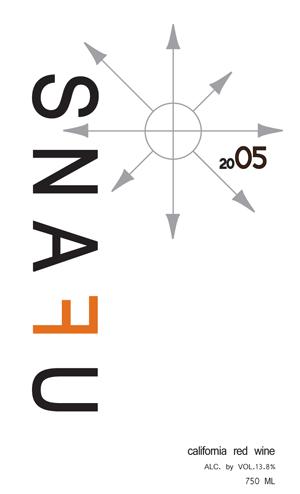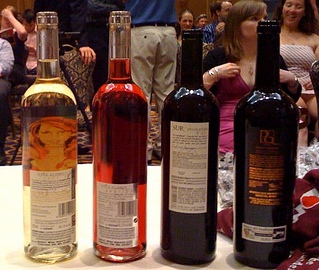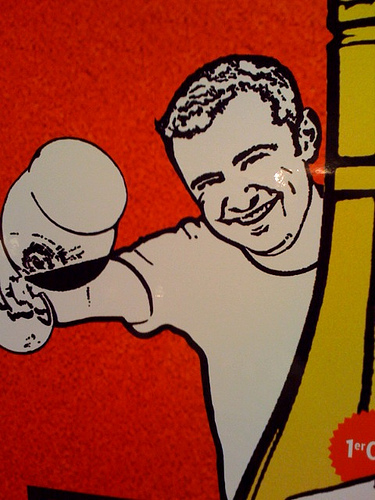 While I may talk a lot about my love of rustic, French wines, Spain is also near and dear to my heart. In particular, I frolic in the Priorat whenever I have the excuse to take home one of their higher ticket sensations. What is it I love about these wines? Let's see... how about:
Layered with flavor.
While I may talk a lot about my love of rustic, French wines, Spain is also near and dear to my heart. In particular, I frolic in the Priorat whenever I have the excuse to take home one of their higher ticket sensations. What is it I love about these wines? Let's see... how about:
Layered with flavor.
Concentrated with ripe dark and red fruit flavors.
Medium-plus bodied so as not to overwhelm and distract, and instead packing just enough of a mouthfilling punch.
Food friendly with solid acidity, but dry enough to warrant a bite or two of cured meat, manchego cheese or lamb. And to my taste, perhaps their best attribute:
Rustic, though in a distinct, clean, minerally sort of way (rather than having the damp-trodden forest floor or barn-tastic qualities of many Cote du Rhone wines).
The combination of seriously old vines (less fruit produced), super challenging growing conditions and the fact that the Priorat is the new 'hotness', means these wines fetch worthy, but not necessarily recession-sensitive prices.
Enter the Montsant region. Montsant is the lesser known horseshoe region that encompasses the Priorat. Here the climate is similarly arid, but the soil has its own unique mixture of slate, granite, sand, limestone and clay; each vineyard has a unique terroir. Like its better-known counterpart, Montsant also boasts a tremendous number of 100+ year old vines. (Yes, you can let out a cheer!) In fact, 55% of the vines in Montsant are >20 years old; Priorat can "only" boast 40%. And there you have it - tremendous concentration and distinct, let-your-heart-sing flavors! All that hard work by the vines to produce just a few clusters means happiness in your glass.
When its cold outside and dinner "in" with friends is on the menu Montsant wines are a brilliant option. I proved this little theory of mine last weekend when I hosted a bit of a dinner party. I was serving a spinach and beet salad with cashews and feta; garlic, lemon and thyme roast chicken; and roast potatoes. I wanted a wine with solid acidity, a bit of rusticity and great concentration. It also had to be light enough on its toes (that is, have enough bright fruit) to be universally appealing to my guests. I was tempted to go for a basic Cote du Rhone, but wanted riper, redder fruit flavors and something with a touch more minerality and less barnyard "funk". The steep-sloped Priorat region came to mind, but I knew I'd open several bottles and didn't want to spend $20 on each. A Montsant was a natural solution.
The Etim Seleccion 2006 is a new Montsant wine brought to us by the folks at Ole Imports. It has entered the market at a great time, too, just when we're looking for fabulous wines at accessible prices. The Etim is 60% Grenache, 30% Carigane, and 10% Syrah. This varietal combo means sweet, juicy, ripe, red fruits are delivered in a mouthfilling package; and the terroir in Montsant means you'll find a touch of clean, wet-slate minerality to boot.
Too much wine speak mid week? Let me put it this way: if you were going on a first date with the Etim, you'd be waiting for the moment when you could escort her out of the restaurant into the mind-clearing chill, gently push her up against the brick and discover for yourself just how succulent, sweet and edgy she is.
Can you beat that? What wine did you enjoy last weekend?


 Today the rain and leaves are swirling and the sun isn't due to show itself. On burly fall days like these, there's nothing better than an awesome bottle of wine to hunker down with and lift your spirits!
The last few weeks I've broken down the nerdier nuances of cool red varietals perfect for fall. While fabulous on their own, sometimes the best of the best are actually blends of a few - or several - different grapes. Given the circumstances outside my office window, it's only appropriate that we start exploring these finds with the 2005 SNAFU red blend.
Today the rain and leaves are swirling and the sun isn't due to show itself. On burly fall days like these, there's nothing better than an awesome bottle of wine to hunker down with and lift your spirits!
The last few weeks I've broken down the nerdier nuances of cool red varietals perfect for fall. While fabulous on their own, sometimes the best of the best are actually blends of a few - or several - different grapes. Given the circumstances outside my office window, it's only appropriate that we start exploring these finds with the 2005 SNAFU red blend. You've heard me talk about Syrah here and there over the months. This is because I'm a huge fan of
You've heard me talk about Syrah here and there over the months. This is because I'm a huge fan of  I alluded earlier this week that my take on the 4 wines Gary Vaynerchuk tasted out at the
I alluded earlier this week that my take on the 4 wines Gary Vaynerchuk tasted out at the 
 After the show ended Gary asked the crowd the following question: Do you like 1) mangos, 2) escargo and 3) sliders from White Castle? If you answered "yes" to ALL THREE of those, then you have the same palate as Gary. I answered yes to only one, mangoes. But Gary and I certainly share a similar philosophy about wine: get out there and taste!
After the show ended Gary asked the crowd the following question: Do you like 1) mangos, 2) escargo and 3) sliders from White Castle? If you answered "yes" to ALL THREE of those, then you have the same palate as Gary. I answered yes to only one, mangoes. But Gary and I certainly share a similar philosophy about wine: get out there and taste!